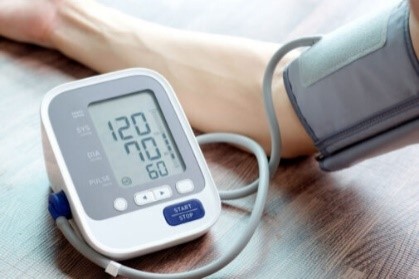Here’s How To Read Your Blood Pressure
 To maintain healthy blood pressure, it’s important to understand each number in your blood pressure reading. The reading has two sets of numbers that measure the pressure that is put on your artery walls.
To maintain healthy blood pressure, it’s important to understand each number in your blood pressure reading. The reading has two sets of numbers that measure the pressure that is put on your artery walls.
“The first number is called systolic blood pressure, and the second number is called diastolic blood pressure,” says Dr. Jennifer George, a family medicine physician at Aurora Health Care.
Systolic blood pressure: This number, which should be the higher of the two, measures the pressure your heartbeat makes in your arteries when your heart pushes blood out of the heart and into your body.
Diastolic blood pressure: This number, which should be the lower of the two, measures the pressure in your arteries when your heart is relaxed.
Blood pressure is measured in millimeters of mercury, or mm. According to the American Heart Association, a reading of 120/80 mm and under is considered to be a normal blood pressure range. If your blood pressure reading is consistently higher than those numbers, you may have high blood pressure, also known as hypertension. Hypertension can be associated with higher risks of stroke, heart attack and overall cardiovascular disease.
Your blood pressure not only plays a big role in your heart health, but your overall health.
“When people develop high blood pressure, it makes your heart work harder to pump blood around the body,” says Dr. George. “The elevated blood pressure can cause damage to the small arteries in your eyes, kidneys, and it can damage your heart as well. Untreated blood pressure is the second leading cause of kidney failure in the United States. It can also lead to blindness and a condition called congestive heart failure.”
If your blood pressure is below the normal level, also known as hypotension, parts of the body may not be getting enough blood. Hypotension can cause feelings of lightheadedness, nausea, and fainting, among other symptoms.
Tips for measuring blood pressure
Dr. George shares these tips for measuring your blood pressure and making sure you get the most accurate reading:
- Sit in a comfortable, relaxed position for a few minutes before your reading
- Keep your legs uncrossed and rest your feet flat on the floor
- Relax the arm that is receiving the blood pressure reading
- Breathe as you normally would and avoid talking while your blood pressure is being taken
- Avoid smoking or drinking a caffeinated beverage within an hour of checking your blood pressure
To discuss your blood pressure or any concerns you may have, make an appointment with your primary care doctor to discuss what’s right for you.
Article contributed by: Hannah Koerner
Tags: #bloodpressure, #howtoreadbloodpressure, #parishnurse, #readbloodpressure

Comments are closed here.